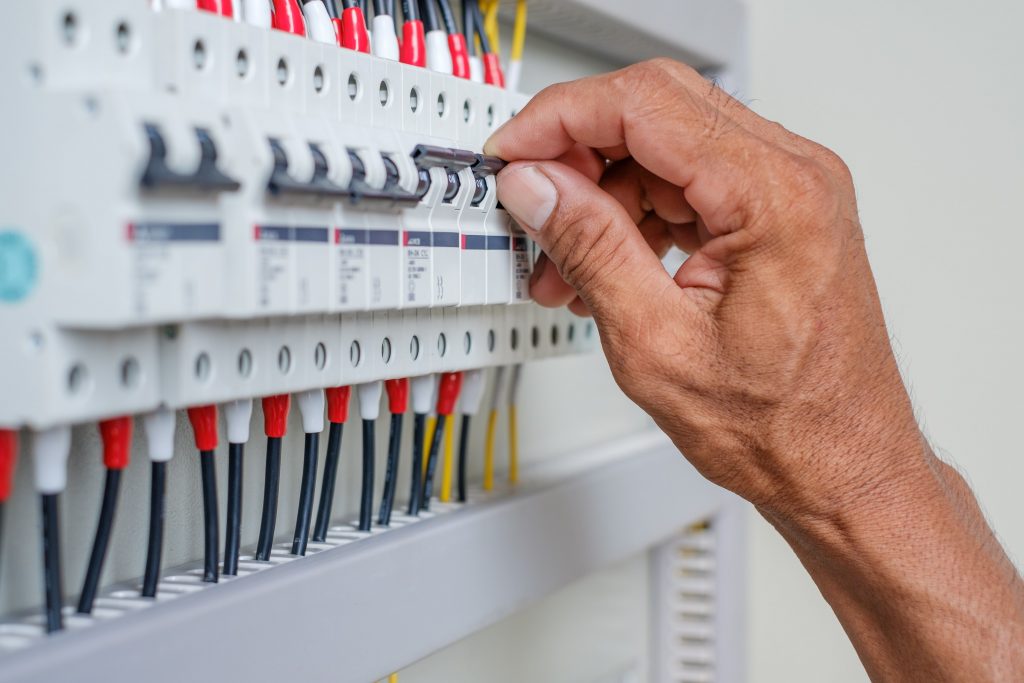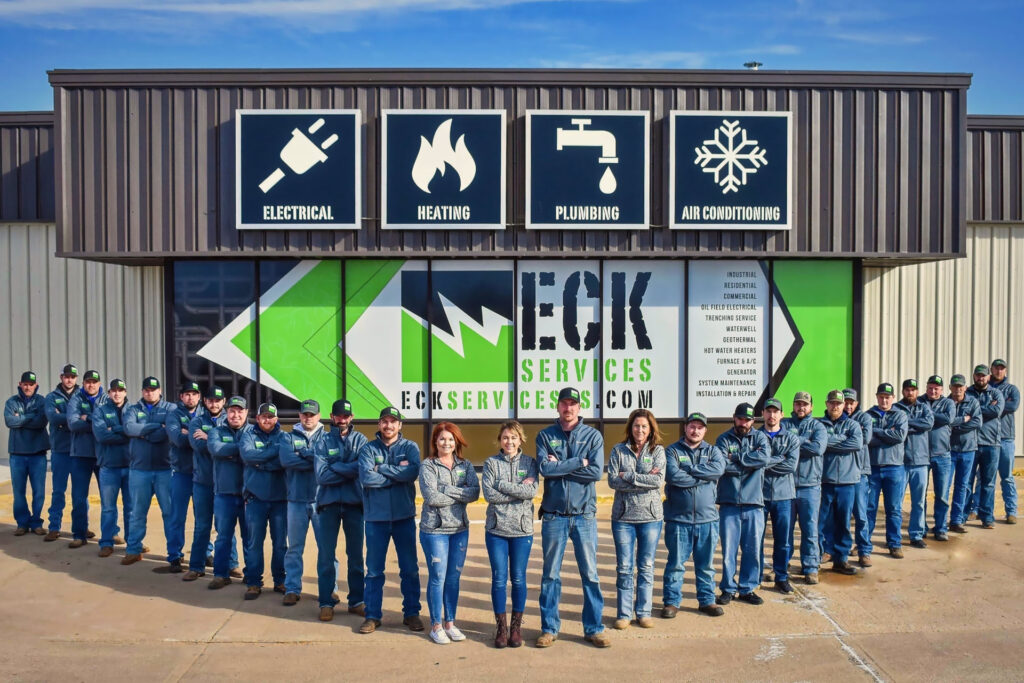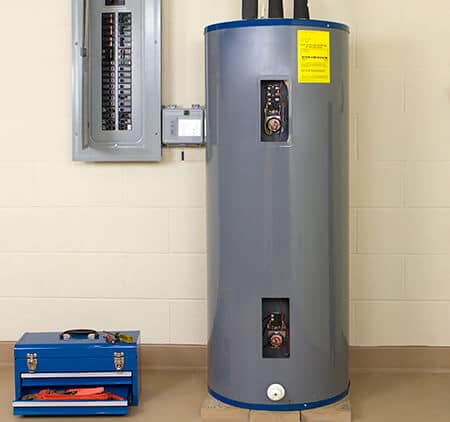Blog
Overloaded Circuit? Here’s How to Fix It Safely

We rely on electricity heavily for many of our daily functions, such as turning on or off the lights, cooking on the stove, and charging our numerous devices. If you’re not careful about checking your electrical circuits during such high usage, you could experience an overloaded circuit.
A circuit shutdown occurs when too much current flows through the electrical wiring. It can result in overheating, electrical fires, and extensive damage to your appliances or devices.
However, knowing the signs of a circuit overload can help you save on costly repairs and also protect your family’s safety in your own home.
Consider the following tips to safely fix an overloaded circuit, from Eck Services, your Wichita licensed electrician. We are dedicated to helping you keep your home secure and your electrical system running smoothly.
What is an Overloaded Circuit?
An overloaded circuit is the result of overusing the appliances or devices needed in your home. Devices used simultaneously or using high-powered devices for an extended time will wear out the limited capacity of the circuit.
Blow drying your hair at the same time as making your morning coffee, for instance, can cause the circuit to receive more power than it can handle. This will lead to the power tripping and shutting down completely, disrupting your power supply and posing safety risks.
Signs of an Overloaded Circuit to Watch Out For
Knowing the potential signs of an overloaded circuit is important for safeguarding your home and family from potential power outages and electrical hazards.
Most circuits are designed to operate at a fraction of their maximum 100% capacity, which means you will only start noticing issues when they reach their full capacity, which can be increasingly dangerous.
Instead, staying alert to the common signs of an overloaded circuit, like flickering lights, can help you get professional help from a licensed electrician and avoid electrical fires or an increased chance of structural damage.
The common signs of an electrical overload include:
- Flickering or dimming indoor or outdoor lights
- Frequently tripped circuit breakers or blown fuses
- Warm or discolored wall plates
- Cracking, sizzling, or buzzing from receptacles
- Burning odors from receptacles or wall switches
- Mild shock from appliances, switches, or receptacles
How to Fix an Overloaded Circuit
When your circuit breaker finally blows its top, you must take careful steps to prioritize your safety.
While you must seek circuit services from a licensed electrician, there are safe ways for you to quickly eliminate heat sources and the potential for electrical fires while help is on the way.
Here are some steps to potentially resolve an overloaded circuit and prevent further damage:
Unplug Some Appliances
The simplest way to fix a circuit overload is to unplug all appliances and devices currently being used. Begin with non-essentials, like phone or device chargers, or small appliances like the coffee machine. Keep power sourced to essentials like the fridge in case the power supply shuts off completely.
Spread Out the Load
If you are unable to unplug the appliances, try to spread out the electrical load across many circuits. This means avoiding using kitchen appliances simultaneously and placing higher-energy appliances on a separate circuit.
Upgrade the Circuit
Investing in a new or more advanced circuit breaker can help ensure that your power supply safely meets your home's needs.
The professional technicians at Eck Services can help you select a new circuit breaker and even install a dedicated circuit for higher-power appliances.
This will lessen the burden on each circuit, making it less likely you’ll experience an overloaded circuit.
Replace the Circuit Breakers
If your circuit breaker is old or experiencing several outages, it might be time for a replacement. The licensed electricians at Eck Services can provide professional circuit installation and replacement to ensure that your circuits are protected and equipped to handle your usage load.

How to Prevent Electrical Overloads
As a homeowner, you have the power to prevent circuit overloads without disrupting your daily routine. A proactive approach to understanding and managing your home’s electrical system can significantly reduce the risk of overloads and potential electrical fires.
Becoming familiar with your circuit’s capacity and how much power it can safely supply will help you adjust your electrical usage to maintain safe and efficient current flow to your circuit breaker.
Here are a few ways you can lessen the likelihood of electrical overloads:
Check the Circuit Capacity
Locate your breaker box and look for the corresponding breaker switch for the tripped circuit. The breaker switch should show 15 to 20 amps, which is the maximum current that the circuit can deliver. By adding up the amp counts of each device on the circuit, you will find the circuit’s capacity.
Keep Appliances on a Dedicated Circuit
Place each of your high-power appliances (e.g., washers, dryers, ovens, etc.) on its own circuit to lessen the consumption of circuit amps. This helps prevent single energy-intensive appliances from using most of a single circuit's power capacity.
Avoid Using Extension Cords
Extension cords increase the chance of a circuit overload by placing a power source for multiple devices on the same circuit. While they are convenient, they can lead to overload risks, so opt for separate outlets or circuits for multiple devices.
Use Power Strips
Power strips distribute electricity needed to run multiple devices across several outlets. This helps to streamline the process of keeping appliances on a dedicated circuit and lessening the current drawn from each circuit. However, remember that power strips don’t change how much power is pulled from each outlet.
Use LED Bulbs
LED bulbs consume less energy and have a longer lifespan than traditional incandescent bulbs, helping reduce your home's overall electrical load.
Schedule an Electrical System Inspection
Regular inspections and electrical repairs from a licensed electrician help identify potential issues like overloaded circuits or outdated wiring. Eck Services will inspect your electrical panel, outlets, switches, and wiring for early detection, preventing costly repairs and enhancing safety.
Rewire Your Home
Rewiring your home ensures your electrical system meets current safety standards and can handle modern energy demands. It can help redistribute power between appliances, prevent frequent breaker trips, and reduce the risk of electrical fires.
Get an Electrical Panel Upgrade from Eck Services
Investing in an electrical panel upgrade can help improve the safety and performance of your electrical system, reduce the risk of electrical fires, and even boost your home value. Eck Services offers electrical panel upgrades backed by extensive years of experience and high-quality craftsmanship.

Protect Your Home From Overloaded Circuits
If you’re concerned about circuit overloads, contact our team. Eck Services offers expert electrical repairs, rewiring, panel upgrades, and circuit breaker services to keep your home safe so you can rely on your devices and appliances with confidence.
We’re committed to delivering top-tier electrical solutions without the added cost for homeowners in Wichita, Kingman, Anthony, Hutchinson, and nearby communities.
Upgrade Your Electrical System
Frequently Asked Questions
Can an overloaded circuit cause a fire?
Yes, overloaded circuits are a significant cause of residential fires. The National Fire Protection Association finds that 47,700 home fires in the U.S. are caused by electrical failures or malfunctions each year, making it very important that you lower your risk by not overloading your circuit breakers.
What is the cost of a circuit breaker repair?
Circuit breaker repairs typically cost between $100 and a few hundred dollars. The exact cost depends on the extent of the repair needed; for instance, resetting a tripped breaker is much less expensive than a complex breaker installation.






